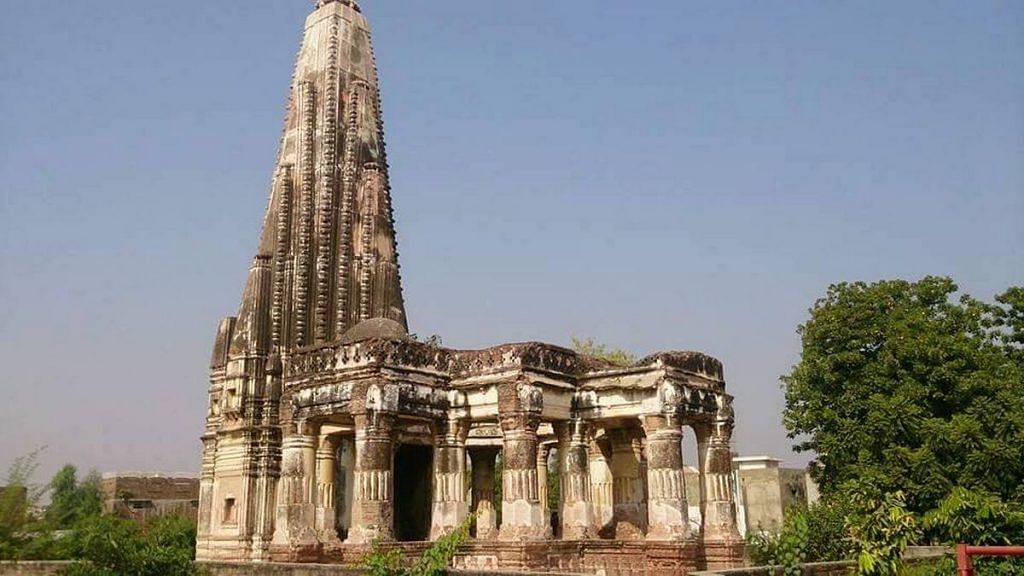New Delhi: Pakistan has decided to open the gates of an ancient Hindu temple in Sialkot on 5 August, during the Hindu festival of Nag Panchami, for the first time since Partition in 1947.
The 1,000-year-old Shawala Teja Singh temple had been governed by the Evacuee Trust Property Board (ETPB) in Pakistan, a body responsible for the maintenance of properties abandoned by people who left Pakistan during Partition, Arab News said.
The temple got a mini launch Saturday when Sialkot deputy commissioner Bilal Haider told local reporters that officials had collaborated with the ETPB to reopen the temple and “people are now free to visit anytime”.
The move comes amid a series of ‘goodwill gestures’ that Pakistan has been making in recent weeks that are seen as confidence-building measures. Official sources in India, however, continue to maintain that these measures will not contribute towards the resumption of the stalled dialogue between the neighbours even as the Modi government remains firm on its stance that “talks and terror cannot go together”.
Just days ago, the Imran Khan government allowed the Indian High Commissioner to Pakistan, Ajay Bisaria, and his wife, Bharati Chaturvedi, to visit cities as diverse as Lahore and Multan.
Sheikh Haroon is pleased to see us in his footwear shop, Khussa Mahal, in Multan, even though just for a quick 15 minutes. He’s proudly put up a photo of the last Indian who visited, abt 15 years ago–Sachin Tendulkar. Check out the frame on the upper right. #Multan @sachin_rt pic.twitter.com/L75YR4K7Ej
— Bharati Chaturvedi (@Bharati09) July 28, 2019
Bisaria also undertook a private visit to Lahore along with his wife on 24 July where he called on the Governor of Pakistan Punjab, Mohammad Sarwar, who told him that “Pakistan wants better relations with India”.
Indian high commissioner to #Islamabad @Ajaybis called on Governor Punjab @ChMSarwar today.
Paksitan wants better relations and peace with neighbouring countries including #india.#KartarpurCorridor is symbol of peace, said Governor.
PS.@ImranKhanPTI and @PMOIndia to bring peace pic.twitter.com/hLDnOwRZyz— Pawan Singh Arora ?? (@SinghOfPakistan) July 24, 2019
This is in stark contrast to similar times when the two countries sparred over talks beginning only when terrorism ended. Back then, diplomats stationed in Delhi and Islamabad were not allowed to leave their respective capitals — Pakistani diplomats couldn’t even travel to Gurgaon without special permission while Indian diplomats couldn’t visit Takshila, a key city associated with Chandragupta Maurya’s empire and less than a 100 km from Islamabad.
The gestures have come in the wake of “exchange of pleasantries”, as described by an MEA spokesperson, between Prime Minister Modi and his Pakistani counterpart Imran Khan at Bishkek on the margins of the Shanghai Cooperation Organisation Summit.
“This is an attempt by the present Pakistani government at projecting a liberal and progressive image,” Sharat Sabharwal, former Indian high commissioner to Pakistan told ThePrint.
Also read: Kartarpur Corridor will be ready by October, says India
A series of measures
The Pakistani measures have straddled different spheres.
Earlier this month, the country reopened its airspace to Indian flights, which had been shut since the Balakot air strikes in February.
Only a fortnight ago, it gave in to the Indian demand of building a bridge across the Ravi river that lies between India’s Dera Baba Nanak and the Kartarpur Sahib gurudwara in Pakistan’s Narowal district. Pakistan also agreed to take in 5,000 Sikh pilgrims a day once the corridor is fully established.
And on 27 June, authorities in Lahore unveiled a lifesize statue of Maharaja Ranjit Singh outside the Mai Jindian Haveli outside the Lahore fort close to the samadhi of the Maharaja whose 40-year-old rule in 19th century Punjab was synonymous with the rise of the state.
Earlier this month, a 500-year-old Gurudwara Babe-de-Ber in Sialkot recently opened its doors for Indian Sikh pilgrims. For many years, only Sikhs from the US, Canada and Europe were allowed to visit the gurudwara.
Also read: India conveys to Pakistan concerns about possible attempts to disrupt Kartarpur Sahib pilgrimage
